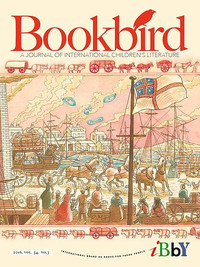Bookbird 3 / 2016
This issue of Bookbird focuses on the children’s literature of Oceania: New Zealand, Australia, and the Pacific Islands. In her introduction, guest editor Anna Jackson, provides a historical and thematic overview of this rich and varied literature. In the articles that follow we get in-depth analyses of all things Oceanic. Nicola Daly examines “Dual Picturebooks in English and Māori,” and Kay Hancock re- reads “New Zealand Books for New Zealand Students: The Portrayal of Children’s ‘Own Worlds’ within the 1963 Ready to Read Instructional Reading Series.” These two New Zealand/Pacific articles are; followed by a decidedly more Australian and somewhat less ‘pacific’-sounding article: “Identifying with Trauma: Reframing Anzac in Contemporary Australian Young Adult Literature” by Troy Potter. To complete the picture, we have Erica Hateley’s “Judging Books by Their Covers: Australian Children’s Classics in the Twenty-First Century,” and Sophie Masson and Elizabeth Hale’s "Mosaic and Cornucopia: Fairy Tale and Myth in Contemporary Australian YA Fantasy." But the Oceanic theme of this issue is not only carried by the feature articles. In the “Children & Their Books”-section Belle Alderman and Trish Milne present The National Centre for Australian Children’s Literature and its “unique and significant collections.” Furthermore, in the “Authors and Their Books” section poet Paula Green talks about “being an unofficial ambassador for children’s poetry in New Zealand.” In the same section, we find an interview with writer Tulia Thompson.
Finally, moving up from “down under” and away from the Pacific hemisphere, we find some regular Bookbird features, such as “Books on Books,” with reviews commissioned from leading international scholars by Christiane Raabe and Jutta Reusch at the International Youth Library in Munich. Further, the Focus IBBY-section, with IBBY-new from all over the world, written by Liz Page; the postcards that you find in different places in the journal, collected and edited by Barbara Lehman. What all of these sections and individual texts have in common is their diversity and international reach. Timotea Vrablova captures this sentiment in her Letter “BIB Beyond the Borders,” which relates the history of the Biennale in Bratislava. In my Introduction too I discuss this topic, of children’s literature “beyond the borders,” and I ask, again, the old question “what is international children’s literature?”
The answer is – Bookbird!


